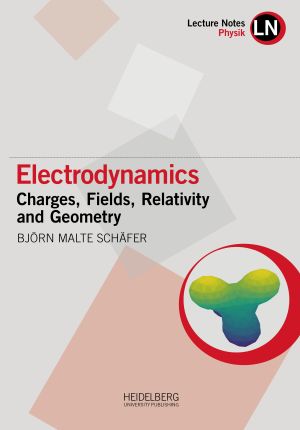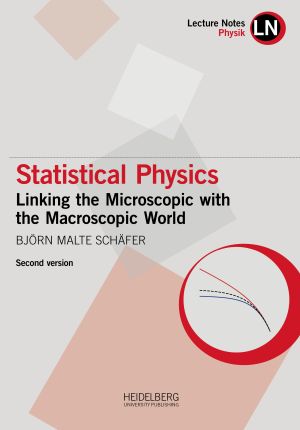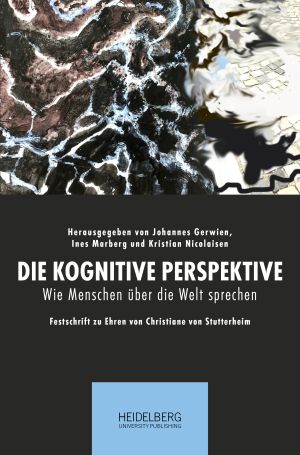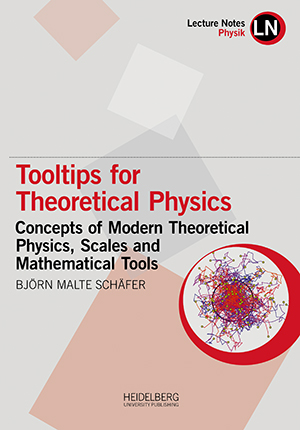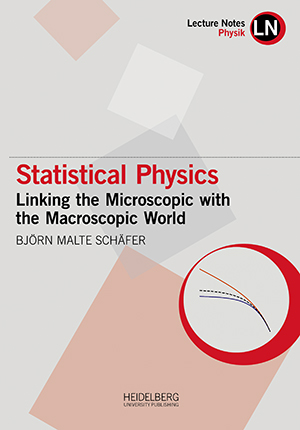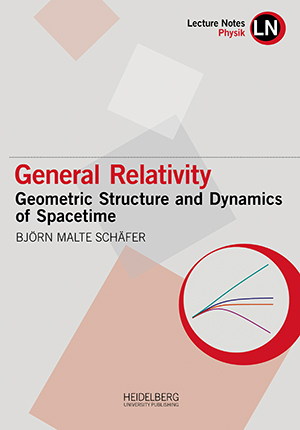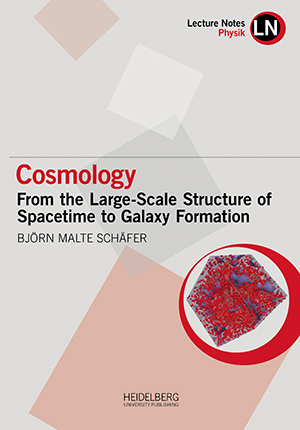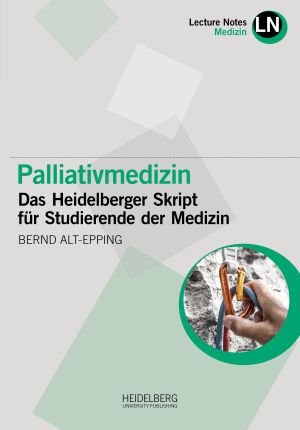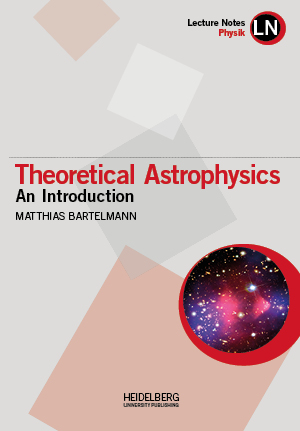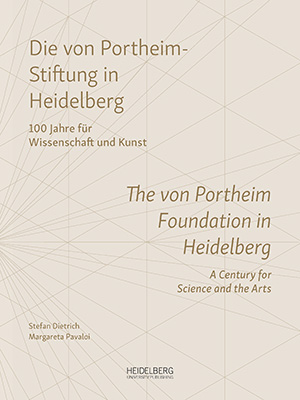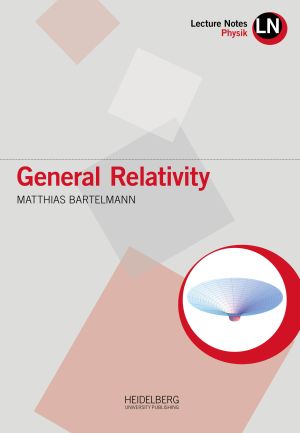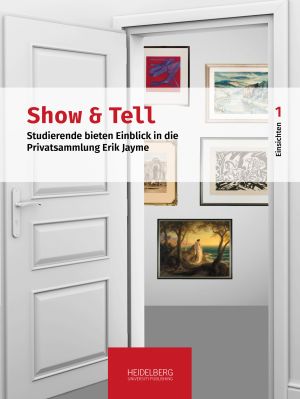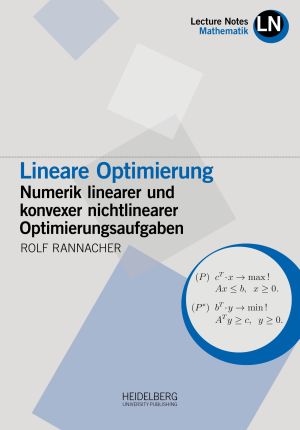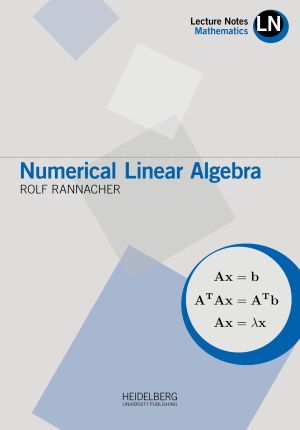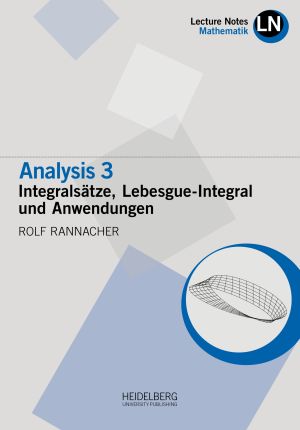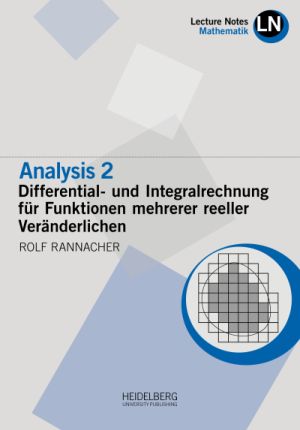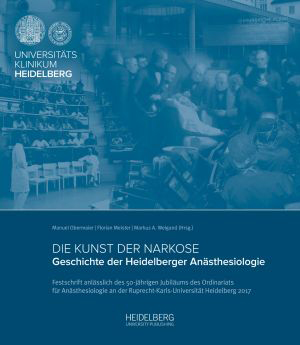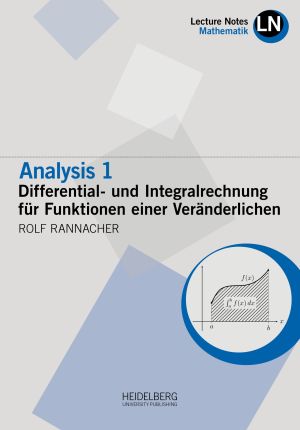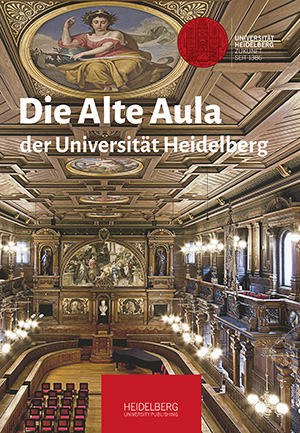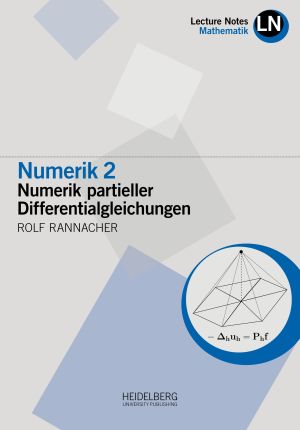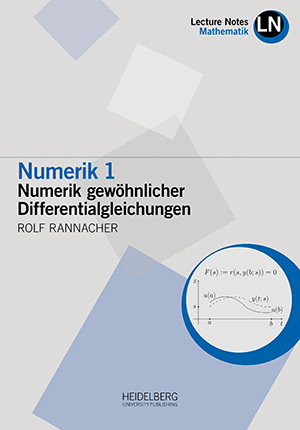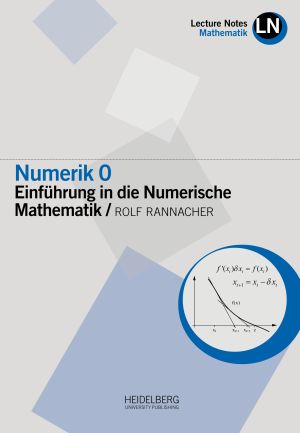Campus Media
Writings from the University about the University
Heidelberg University, founded in 1386 and the oldest University in present-day Germany, looks back on an eventful past, and a long influential history. Its history which manifests itself in the university collections as well as in the research findings and biographies of their scholars are reflected in various publications. These works, together with the many and diverse activities carried out at the university to ensure the transfer of current knowledge and research to a broader public, deserve their own platform. The “Campus Media” section is a forum for the publication of writings about historical and current affairs on topics related to the University, as well as for making new research available to a wider audience. Including journals such as Ruperto Carola, Heidelberger Jahrbücher online and Studium Generale (2016–2021), written in a clear and comprehensive style, scientists and scholars inform the public about current developments in research.
Lecture Notes as part of "Campus Media" are aimed at students interested in exploring a specific topic in great depth. Lecture Notes provide a didactic account of essential fundamentals in a specific scientific field, while at the same time addressing and describing current topics of active research and controversy within the field. Lecture Notes on a given topic bear the mark of the specific lecturer who produced them, offering a great opportunity for students, and others, to gain unique insights into these topics and beyond from experts in the field.
Given the intended target group, “Campus Media” publications are not necessarily peer reviewed.
Published so far
Reflexionsvertrauen: Eine Festschrift zu Ehren von Klaus Tanner
As a commemorative publication for the long-standing Heidelberg professor of Systematic Theology (Ethics), Prof. Dr. Klaus Tanner, this volume brings together contributions from colleagues, students and close companions. The volume takes a multifaceted look at the fundamental themes of Klaus Tanner's research and teaching. Overall, the outline of a theological ethics emerges that relies specifically on the trustworthiness of reflection.
Process Evaluation of Interventions in Healthcare: An Introduction to Concepts, Methods, and Practices
Process evaluation is research that describes and explores the processes that influence the outcomes of interventions. In health care, many interventions aim at improving the health of patients and populations, or at implementing desired practices by healthcare providers. Process evaluation concerns the uptake of interventions, their active components, and the determinants of their outcomes. The findings of process evaluation help to interpret interventions’ effectiveness, optimize intervention design and delivery, and assess the transferability of interventions across settings. This book provides a concise introduction to the concepts, methods and practices of process evaluation in healthcare settings.
Komplexität und Problemlösen: Festschrift für Joachim Funke zum 70. Geburtstag
Complexity and problem-solving have become meaningful keywords for research in the cognitive sciences in recent decades. Joachim Funke's psychological approach is closely linked to both terms. His reasoning on complex problem-solving connects different lines of research, such as psychology of action, systems theory, and the computational theory of problem-solving. This volume brings together a wide range of contributions from this field, including biographical commentaries, academic essays, and original contributions.
Electrodynamics: Charges, Fields, Relativity and Geometry
Electrodynamics is a cornerstone of every modern education in theoretical physics, as it introduces a geometric picture of the laws of Nature, and is permeated by relativity. Starting from the fundamental phenomenology of Maxwell’s equations, the script treats the construction of Green-functions for solving potential problems, before moving to the dynamics of the electromagnetic field and the Poynting-theorems. Retardation bridges to the notion of light cones and the emergence of relativity, leading to a covariant formulation of Maxwell’s equations. Gauge transformations are treated in detail, as well as the behaviour of Maxwell’s equation under discrete symmetries.
Statistical Physics: Linking the Microscopic with the Macroscopic World
Statistical physics provides the microscopic theory for thermodynamic macroscopic properties of a physical system. These lecture notes introduce the necessary concepts of statistics and analytical mechanics for equilibrium thermodynamics with partition functions. They cover classical and quantum statistics, and treat advanced topics such as Langevin dynamics, the Fokker-Planck equation and phase transitions. Many systems like ideal classical and relativistic gases are worked out in detail.
First version under https://doi.org/10.17885/heiup.1058
Die kognitive Perspektive: Wie Menschen über die Welt sprechen. Festschrift zu Ehren von Christiane von Stutterheim
Christiane von Stutterheim's scientific work ranges from language typology to sentence and text production, to questions of second and foreign language acquisition. Her particular contribution lies in emphasizing linguistics as an important contributor to cognitive science. The Festschrift attempts to reflect the breadth of Christiane von Stutterheim's research activities.
Tooltips for Theoretical Physics: Concepts of Modern Theoretical Physics, Scales and Mathematical Tools
Theoretical physics is commonly taught in separate lectures, illustrating the physics behind the great constants of Nature: Electrodynamics and the speed of light, quantum mechanics and Planck’s constant, thermodynamics and Boltzmann’s constant, and finally relativity with Newton’s constant as well as the cosmological constant. In these lecture notes, the concepts of theoretical physics are illustrated with their commonalities, and phenomena are traced back to their origin in fundamental concepts.
Statistical Physics: Linking the Microscopic with the Macroscopic World
Statistical physics provides the microscopic theory for thermodynamic macroscopic properties of a physical system. These lecture notes introduce the necessary concepts of statistics and analytical mechanics for equilibrium thermodynamics with partition functions. They cover classical and quantum statistics, and treat advanced topics such as Langevin dynamics, the Fokker-Planck equation and phase transitions. Many systems like ideal classical and relativistic gases are worked out in detail.
2nd version under https://doi.org/10.17885/heiup.1518
General Relativity: Geometric Structure and Dynamics of Spacetime
General relativity is the theory of the structure and dynamics of spacetime. These lecture notes provide an introduction into the concepts of differential geometry, in particular pseudo-Riemannian geometry, and discusses the ideas behind the construction of a gravitational field equation. Exact solutions to the field equation for highly symmetric spacetimes, i.e. black holes, FLRW cosmologies and gravitational waves, are worked out. Advanced topics that are covered include Lie derivatives and the Killing equation, the derivation of the field equations from variational principles, and the formulation of field theories on curved spacetimes.
Cosmology: From the Large-Scale Structure of Spacetime to Galaxy Formation
The lecture notes give an overview of modern cosmology: After introducing the necessary concepts from general relativity, the FLRW-class of cosmological models is discussed, with emphasis on dark energy. Cosmic structure formation, the necessity of dark matter and the interplay between statistics and nonlinear fluid mechanics are treated in detail. The physics behind cosmological observations that have led to the standard model of cosmology is explained, in particular supernovae, the cosmic microwave background and gravitational lensing.
Palliativmedizin : Das Heidelberger Skript für Studierende der Medizin
What is Palliative Medicine / Palliative Care? What stresses are patients and their relatives exposed to in incurable and advanced disease situations? How can appropriate comprehensive treatment and support be managed? How can a decision to limit or continue therapeutic measures at the end of life be justified?
This script is intended to provide medical students and all interested parties with an insight into the necessities and possibilities of comprehensive palliative medical support and to be of assistance for reference and preparation for the palliative medicine examinations in QB 13 and the state examination.
Theoretical Astrophysics: An Introduction
Understanding astronomical objects requires knowledge and methods from different branches of theoretical physics: we diagnose these objects mostly by the light we receive; the observed phenomena often have to do with the flow of fluids, sometimes ionised, sometimes magnetised; and the measured velocities reflect dynamics driven by gravitational fields. Courses in theoretical physics lay the foundation in classical and quantum mechanics, electrodynamics, and thermodynamics, but a gap remains between this foundation and its application to astrophysics. These lecture notes build upon the core courses in theoretical physics and provides the methods for understanding astrophysics theoretically.
The von Portheim Foundation in Heidelberg: A Century for Science and the Arts
In 2019, the ›Josefine and Eduard von Portheim Foundation for Science and the Arts‹ celebrated its centenary. The book gives a summary description of the development of the Foundation, its institutes and collections from its establishment until the difficult new start after the Second World War. It is equally the history of today’s Ethnographic Museum vPST which is based on the Foundation’s former Ethnographic Institute. The publication provides information on the life and work of Victor and Leontine Goldschmidt, who established and endowed the Foundation, on its guiding ideas and purpose, and on its misuse under the National Socialist regime. It looks at the scientific work of Victor Goldschmidt, the eminent crystallographer, at his attempts to bridge the gap between sciences and the humanities, and the manifold relations between the Foundation and the University of Heidelberg.
General Relativity
Einstein‘s theory of general relativity is still the valid theory of gravity and has been confirmed by numerous tests and measurements. It is built upon simple principles and relates the geometry of space-time to its matter-energy content. These lecture notes begin by introducing the physical principles and by preparing the necessary mathematical tools taken from differential geometry. Beginning with Einstein’s field equations, which are introduced in two different ways in the lecture, the motion of test particles in a gravitational field is then discussed, and it is shown how the properties of weak gravitational fields follow from the field equations. Solutions for compact objects and black holes are derived and discussed as well as cosmological models. Two applications of general relativity to astrophysics conclude the lecture notes.
Geschichte der Physik an der Universität Heidelberg
More than 600 years of physics and astronomy at the University of Heidelberg: From the late middle ages to the present times, from the study of Aristotelian physics to experiments at the accelerators in Geneva. The university experienced ups and downs, until its physics faculty finally became the largest one in Germany. During the Thirty Years' War, the university was closed, and during the times of National Socialism, Heidelberg became the centre of “German physics”. Scientific highlights were the deciphering of the spectra of star light by Bunsen und Kirchhoff and the discovery of the nuclear shell model by Jensen, who won the Nobel prize.
The Scholar’s Choice: Lieblingsstücke Heidelberger Wissenschaftler aus dem Völkerkundemuseum der von Portheim-Stiftung. Eine Ausstellung anlässlich der Eröffnung des Centrums für Asienwissenschaften und Transkulturelle Studien (CATS)
This volume, which emerged from an exhibition of the same name, comprises seventeen objects from the Ethnological Museum of the von Portheim Foundation in Heidelberg that address various themes of life: love, disguise by masks or jewellery, religion, music, food, measurement and weighing, books, weapons, travel, domination, death. The objects were selected as their favourite pieces by Heidelberg scholars associated with the Centre for Asian Studies and Transcultural Studies, which opened in 2019.
Show & Tell. Studierende bieten Einblick in die Privatsammlung Erik Jayme: Eine Ausstellung der Universitätsbibliothek Heidelberg und des Instituts für Europäische Kunstgeschichte der Universität Heidelberg
It is part of the work of art historians to present selected works of art to a public. Usually, it is only possible to gain the necessary experience and to thus learn the appropriate skills one has entered the professional. However, in a seminar project of the Institute for European Art History at Heidelberg University, the students were offered the rare opportunity to organize their own exhibition already during their studies: they could choose freely works of art from the private collection of Dr. h.c. mult. Erik Jayme and assemble them into an exhibition, then shown in the University Library Heidelberg.
The exhibition Show & Tell. Studierende bieten Einblick in die Privatsammlung Erik Jayme is open to the public from Mai 15th 2019 till February 16th 2020.
Lineare Optimierung: Numerik linearer und konvexer nichtlinearer Optimierungsaufgaben
This introductory text is based on courses within a multi-semester cycle on “Numerical Mathematics” given by the author at the Universities in Saarbrücken and Heidelberg. In the present part basic concepts of numerical methods are presented for solving linear optimization problems (so-called “Linear Programming”). This includes besides the classical ”Simplex method“ also modern ”Interior-point methods“. As natural extensions methods for convex nonlinear, especially quadratic, optimization problems are discussed. Theoretical as well as practical aspects are considered. As prerequisite only that prior knowledge is required, which is usually taught in the introductory Analysis, Linear Algebra, and Numerics courses. For facilitating self-learning the book contains theoretical and practical exercises with solutions collected in the appendix.
Numerical Linear Algebra
This introductory text is based on courses within a multi-semester cycle on “Numerical Mathematics” given by the author at the Universities in Saarbrücken and Heidelberg.
In the present part basic concepts of numerical methods are presented for solving linear optimization problems (so-called “Linear Programming”). This includes besides the classical ”Simplex method“ also modern ”Interior-point methods“. As natural extensions methods for convex nonlinear, especially quadratic, optimization problems are discussed.
Theoretical as well as practical aspects are considered. As prerequisite only that prior knowledge is required, which is usually taught in the introductory Analysis, Linear Algebra, and Numerics courses. For facilitating self-learning the book contains theoretical and practical exercises with solutions collected in the appendix.
Analysis 3: Intergralsätze, Lebesgue-Integral und Anwendungen
This introductory text is based on lectures within a three-semester course on "Real Analysis", given by the author at Heidelberg University. The present third part treats the Riemann integral over lines and surfaces and the integral formulas of Gauß and Stokes. Further, the Lebesgue integral and the corresponding function spaces are introduced. Then, applications are discussed in the theory of Fourier integrals, for basic problems in the calculus of variations and in the theory of partial differential equations. Contents and
presentation are particularly oriented towards the needs of applications in the theory of differential equations, in Mathematical Physics and in Numerical Analysis. The understanding of the contents requires besides the material of the preceding parts of this series, "Analysis 1 (Differential- und Integralrechnung für Funktionen einer reellen Veränderlichen)" and "Analysis 2 (Differential- und Integralrechnung für Funktionen mehrerer reeller Veränderlichen)", only some basic prior knowledge of Linear Algebra. For supporting
self-study each chapter contains exercises with solutions collected in the appendix.
Analysis 2: Differential- und Integralrechnung für Funktionen mehrerer reeller Veränderlichen
This introductory text is based on lectures within a three-semester course on "Real Analysis" given by the author at Heidelberg University. The present second part is devoted to the classical calculus of differentiation and integration for functions of several real variables. Content and presentation are particularly oriented towards the needs of the application in the theory of differential equations, in Mathematical Physics and in Numerical Analysis. The understanding of the contents requires besides the material of the preceding part of this series, "Analysis 1 (Differential- und Integralrechnung fur Funktionen einer reellen Veränderlichen)", only some basic prior knowledge of Linear Algebra.
For supporting self-study each chapter contains exercises with solutions collected in the appendix.
Die Kunst der Narkose: Geschichte der Heidelberger Anästhesiologie. Festschrift anlässlich des 50-jährigen Jubiläums des Ordinariats für Anästhesiologie an der Ruprecht-Karls-Universität Heidelberg 2017
Anesthesiology has a long and eventful tradition in Heidelberg, beginning with the first “narcosis pioneers” – then part of the surgical ward – of the 19th century and resulting in an independent department whose chair was established in 1967. The development of modern anesthesiology is impressive, being a central branch within the field of contemporary medicine, including intensive and emergency medicine, as well as pain treatment and palliative medicine, thus linking the individual operative and non-operative departments. In the light of modern medical and demographic developments, anesthesiology faces the challenge that a growing number of older and seriously ill people undergo surgery. This requires a fine balance between individual needs and the economic necessities and progressive commercialization of medicine.
Analysis 1: Differential- und Integralrechnung für Funktionen einer Veränderlichen
This introductory text is based on lectures within a three-semester cycle on "Real Analysis" given by the author at Heidelberg University. The present first part is devoted to the classical calculus of differentiation and integration for functions of one real variable. Content and presentation are particularly oriented towards the needs of the application in the theory of differential equations, in Mathematical Physics and in Numerical Analysis.
For supporting self-study each chapter contains exercises with solutions collected in the appendix.
Die Alte Aula der Universität Heidelberg
The Great Hall of the Old University building is the ceremonial hall and heart of Heidelberg University. With the aid of allegories and metaphors, it illustrates the history and self-image of the oldest university in modern-day Germany. Originally built in the baroque style, it was remodelled completely on the occasion of the University’s 500th anniversary. The magnificent room donated by the Grand Duke of Baden is one of the few ensembles of the Karlsruhe School of Woodcutting that remains intact; it is used primarily for academic events such as inaugural lectures of newly appointed professors or graduation ceremonies. But the Great Hall is also a place for public concerts and presentations to which the venerable surroundings lend a particular splendour.
Numerik 3: Probleme der Kontinuumsmechanik und ihre numerische Behandlung
This introductory text is based on courses within a multi-semester cycle on “Numerical Mathematics” given by the author at Heidelberg University over a period of 25 years. The present fourth part is devoted to problems in Continuum Mechanics, especially in Structural and Fluid Mechanics, and their numerical solution by finite element methods. Again theoretical as well as practical aspects are considered. As basis of an appropriate numerical approximation the mathematical models are systematically derived from fundamental physical principles. The understanding of the contents requires besides the material of the preceding parts of this series, “Numerik 0 (Einführung in die Numerische Mathematik)”, “Numerik 1 (Numerik gewöhnlicher Differentialgleichungen)”, and “Numerik 2 (Numerik partieller Differentialgleichungen)” only that prior knowledge as is usually provided in the basic Analysis and Linear Algebra courses.
Numerik 2: Numerik partieller Differentialgleichungen
This introductory text is based on courses within a multi-semester cycle on “Numerical Mathematics” given by the author at Heidelberg University over a period of 25 years. The present third part is devoted to numerical methods for solving partial differential equations. Again theoretical as well as practical aspects are considered.
The understanding of the contents requires besides the material of the first two parts of this series, "Numerik 0 (Einführung in die Numerische Mathematik)" and "Numerik 1 - (Numerik gewöhnlicher Differentialgleichungen)", only that prior knowledge as is usually provided in the basic Analysis and Linear Algebra courses. For facilitating self-learning the book contains theoretical exercises with solutions.
Numerik 1: Numerik gewöhnlicher Differentialgleichungen
This introductory text is based on courses within a multi-semester cycle on “Numerical Mathematics” given by the author at Heidelberg University over a period of 25 years. The present second part treats numerical methods for solving ordinary differential equations. Again theoretical as well as practical aspects are considered. The last chapter provides an outlook on numerical methods for partial differential equations. The understanding of the contents requires besides the material of the first volume in this series “Numerik 0” only that prior knowledge as is usually provided in the basic Analysis and Linear Algebra courses. For facilitating self-learning the book contains theoretical and practical exercises with solutions.
Numerik 0: Einführung in die Numerische Mathematik
This introductory text is based on courses on “Numerical Mathematics” given by the author at Heidelberg University within a multi-semester cycle over a period of 25 years. The present first part covers fundamental concepts of numerical methods for solving ordinary analysis and linear algebra problems. Both theoretical and practical aspects are considered. The understanding of the contents requires only that prior knowledge as is usually provided in the basic Analysis and Linear Algebra courses. For facilitating self-learning the book contains theoretical and practical exercises with solutions.





